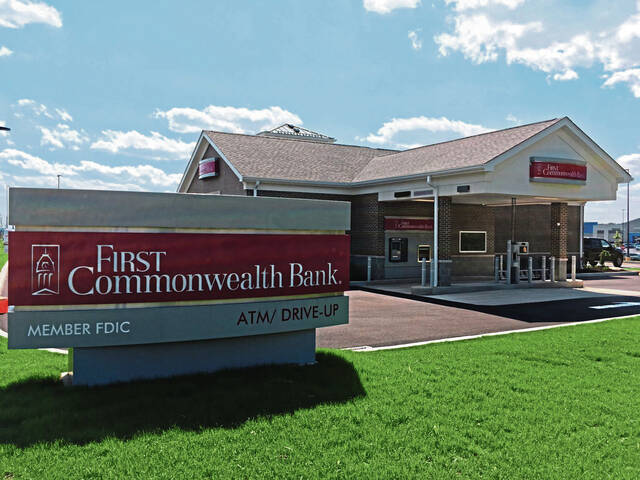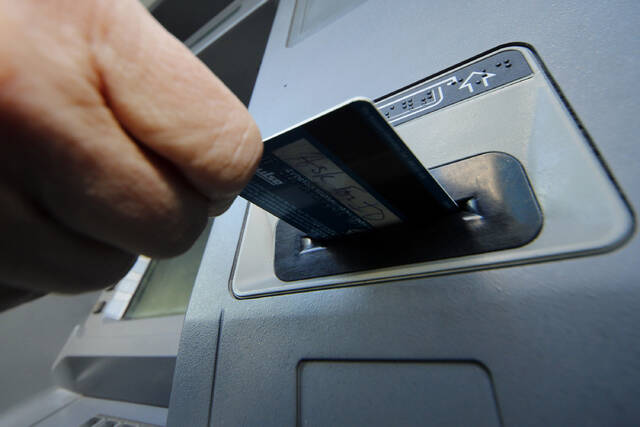Failures aside, banks remain a safe bet for most people's money
Despite the high-profile failures of Silicon Valley Bank, Signature Bank and First Republic Bank this year, most bank deposits are safe because of federal insurance, local bank officials and a financial expert said.
“The majority of the deposits are safe because they are insured by the FDIC (Federal Deposit Insurance Corp.) for up to $250,000. Most people have far less (in the bank),” said Leming Lin, as assistant professor of finance at the University of Pittsburgh.
A two-person joint account, for example, would be insured up to $500,000, with protection at $250,000 for each individual, Lin said.
One positive result of the bank failures is that customers are asking questions about the security of their money.
“They should begin a one-on-one talk with their banker,” said Mark Kochvar, chief financial officer for S&T Bank, an Indiana-based institution with $9.2 billion in assets and 75 offices in Pennsylvania and Ohio.
The FDIC statistics support Lin’s observation that most customers’ money is safe because more than 99% of all deposit accounts, as of last December, were under the insurance limit, reassuring depositors that they need not spark a run on bank funds.
For those people who rely upon credit unions to safeguard their money, the National Credit Union Administration offers the same protection limits — up to $250,000 per individual.
Customers with a large amount of money also can take advantage of a service that taps into a network of banks to spread their funds across several institutions to keep the accounts fully insured by the FDIC, and that accounting of the funds occurs on a daily basis, Kochvar said.
“The consumer gets the protection they need,” he added.
Some banks might offer certain customers with a larger portfolio of assets a guarantee to cover deposits totaling more than than $250,000, said Lin, who has published research on the banking industry.
But, in certain instances, the federal government has stepped in and protected wealthier clients who have more than $250,000 in accounts. To shore up confidence in the banking system and to avoid runs on other banks, federal regulators stepped in and threw a life preserver to those customers at Silicon Valley Bank and First Republic Bank, agreeing to cover any losses over that insured limit.
Like the larger financial institutions in the nation, banks in Western Pennsylvania have customers with more than $250,000 in their accounts, according to Federal Financial Institution Examiners Council reports filed March 31 with the FDIC.
• PNC Financial Services Group Inc. of Pittsburgh had $235 billion spread across 178,685 accounts exceeding $250,000.
• S&T Bank reported having $2.7 billion in deposits in 3,705 accounts exceeding $250,000.
• First Commonwealth Bank, a regional bank based in Indiana with $11.1 billion in assets and 126 offices in Pennsylvania and Ohio, had $3.4 billion in deposits in 4,369 accounts exceeding $250,000.
Eighty-three percent of the bank’s accounts were fully insured, said Jonathan Longwill, a First Commonwealth spokesman.
“This whole collapse has really helped customers have conversations with bankers that they otherwise would not be having,” Longwill said.
That gives the bank an opportunity to talk with customers about what opportunities are available, such as possibly diversifying their assets and aligning their financial needs with their current situation, Longwill said.
“We make sure their money is in the best account” and meets their financial goals, Longwill said.
There has been a dramatic growth in uninsured deposits, thus increasing the exposure of the banking system to bank runs, the FDIC said.
Uninsured deposits accounted for nearly 47% of deposits at its peak in 2021, higher than at any time since 1949. Those deposits are held in a small share of accounts but can be a large proportion of a bank’s funding, particularly among the largest by asset size, the FDIC said.
Joe Napsha is a TribLive reporter covering Irwin, North Huntingdon and the Norwin School District. He also writes about business issues. He grew up on Neville Island and has worked at the Trib since the early 1980s. He can be reached at jnapsha@triblive.com.
Remove the ads from your TribLIVE reading experience but still support the journalists who create the content with TribLIVE Ad-Free.


